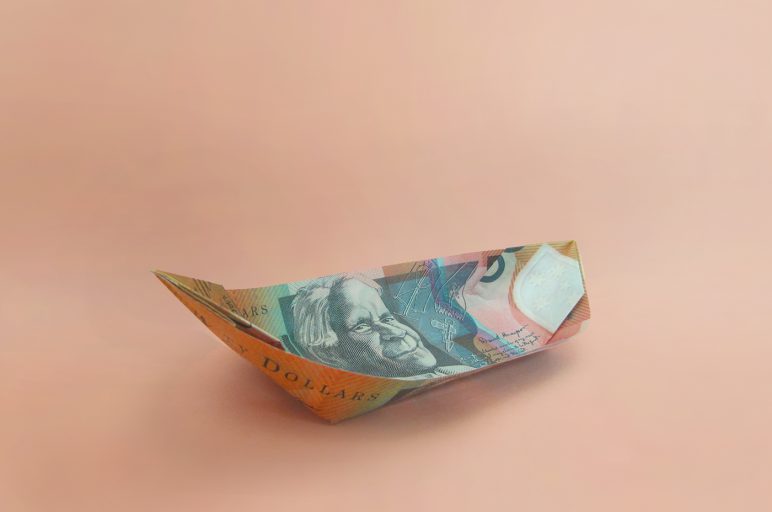Technology companies have taken over the global markets, channeling global demand for goods and services into huge gains for investors. Tech ETFs have ridden that wave too, offering exposure to one of the market’s most influential segments at a time when it is hotter than ever before.
Tech stocks, like any emerging sector, can be volatile, and for every skyrocketing Nvidia stock, there is another that brings warnings of a bubble burst similar to that seen in the early 2000s, when tech first took hold of the market.
The volatility of tech stock has been evident in recent months with Nvidia share prices soaring from market crash to market high. As recently as early January 2025, Nvidia recorded record one-day losses in value (with share prices dropping approximately 17%), following the success of Chinese tech AI chatbot DeepSeek and their claims of utilising cheaper versions of Nvidia chips. This threw investors into turmoil, questioning if Nvidia would continue to experience longstanding success given the tech giants spending, only for the market to rebound shortly after.
The Australian share market only has a 3% allocation to technology companies compared to nearly 27% in the U.S.
Exchange traded funds (ETFs), can provide access to the best performing tech companies around the world while also limiting volatility by providing diversified exposure. Investing in technology ETFs can offer investors broad-based technology exposure, or Stockspot investors with balances over $50,000 can access tech themes to increase the overall allocation to tech companies as a satellite investment complimenting their diversified portfolios.
The following ETFs are listed on ASX that track the broad technology sector:
- BetaShares NASDAQ 100 ETF (NDQ)
- BetaShares Asia Technology Tigers ETF (ASIA)
- The Global X Morningstar Global Technology ETF (TECH)
- Global X FANG+ ETF (FANG)
Note: NDQ also has a hedged version called the BetaShares NASDAQ 100 ETF – Currency Hedged (HNDQ).
Stockspot reviews and compares more than 250 ETFs in our annual Stockspot ETF Report.
Following the success of our annual Stockspot ETF Report, in this article, we road test the best technology ETFs in Australia. We will compare technology ETFs across a range of different metrics, to provide our analysis on the most suitable choice for Australian investors.
- Size
- Costs and slippage
- Liquidity
- Returns and track record
- Exposure and holdings
- Verdict and conclusion
Size
NDQ is the largest ETF in the broad technology category with over $7.3 billion in funds under management, largely due to its first-mover advantage (launching in May 2015), historic strong returns, and because it tracks a well-known index, the NASDAQ.
The newest of the funds, FANG, saw over $350 million in growth between Q2 and Q3 2025, which saw it claim the title of the second largest tech ETF of those compared. HACK is now the third largest tech ETF at over $1.4 billion. ASIA and TECH are lagging behind their peers growing slowly quarter over quarter, to achieve $896 million and $347 million in funds under management respectively.
When it comes to cost, there are two components for ETF investors to consider – the management fee of the ETF and the costs of trading (i.e. slippage).
Slippage refers to how much you lose by crossing the spread when buying or selling an ETF. It’s calculated by the average percentage difference between the best buyer and seller during market hours.
FANG is the lowest-cost technology ETF charging 0.35% per year. NDQ is the leader with the lowest slippage at 0.03%, while FANG ranks second at 0.05%.
ASIA is the most expensive ETF in this category charging 0.67% due to tracking Asian markets which may not be as liquid or have a narrower focus.
| TICKER CODE | MANAGEMENT FEE | BUY/SELL SPREADS (SLIPPAGE) |
| NDQ | 0.48% | 0.03% |
| ASIA | 0.67% | 0.12% |
| TECH | 0.45% | 0.19% |
| FANG | 0.35% | 0.05% |
| HACK | 0.67% | 0.10% |
Liquidity
NDQ is the most liquid technology ETF, trading over $17.7 million in average daily volume. FANG is the next most traded tech ETFs with over $8.8 million traded daily. ASIA, HACK and TECH are significantly less liquid than NDQ trading $3.4 million, $2.6 million and just over $608,000 daily respectively.
Returns and track record
Most technology ETFs listed on the ASX are relatively new and were only launched in the last few years to take advantage of strong interest in the sector and thus do not have a long track record.
FANG, the newest of the ETFs, has the best 5 year return of those compared, generating 26.7% p.a. HACK and NDQ were the second best performing technology ETF returning 19.1% p.a. and 19.0% p.a. over the past five years respectively. The more geographically diverse TECH ETF underperformed comparative to FANG, over the past five years, returning 12.4% p.a. while ASIA has had a tough few years with the lowest 5 year returns of the group, returning 9.0%, as regulation in China has dampened returns.
Despite poor 5 year returns, ASIA has begun to rebound in performance, with the ETF ranking as the second best performing ETF, of those compared, over the past 12 months. The ASIA ETF returned 47.7% over the past 12 months, beaten only by FANG which generated one year returns of 49.9%.
This range of returns shows how widely tech returns can vary given the differing geographic regions, interest rate climates and economic environments at play.
| TICKER CODE | 1 Year Return | 3 Year Return | 5 Year Return |
| NDQ | 29.7% | 29.6% | 19.0% |
| ASIA | 47.7% | 31.7% | 9.0% |
| TECH | 21.9% | 21.9% | 12.4% |
| FANG | 49.9% | 49.4% | 26.7% |
| HACK | 35.5% | 24.5% | 19.2% |
Exposure and holdings
While technology ETFs track a basket of tech stocks, they can have different underlying holdings and subsequent weights based on the indexes they track.
NDQ tracks the NASDAQ 100 Index which looks at the top 100 non-financial companies listed on the NASDAQ exchange.
ASIA tracks the Solactive Asia Ex-Japan Technology & Internet Tigers Index and has a focus on technology companies in China, Taiwan, South Korea, India and Singapore.
TECH tracks the Morningstar Developed Markets Technology Moat Focus Index which comprises up to 50 technology companies with a strong competitive advantage and attractive valuations.
FANG tracks the NYSE FANG+ index which equally weights high growth technology companies.
Here are the top 10 holdings in NDQ, ASIA, TECH and FANG:
| NDQ | ASIA | TECH | FANG | |
| 1 | NVIDIA | Samsung Electronics Co | WiseTech Global Ltd | Broadcom inc |
| 2 | Microsoft | Taiwan Semiconductors | Microsoft Corp | Netflix Inc |
| 3 | Apple | Alibaba Group | Monolithic Power Systems Inc | NVIDIA Corp |
| 4 | Broadcom | SK Hynix Inc | Block Inc | Meta Platforms Inc |
| 5 | Amazon | Tencent Holdings | Marvell Technology Inc | Apple |
| 6 | Tesla | Xiaomi Corp | TDK Corp | Microsoft Corp |
| 7 | Meta Platforms inc | Hon Hai Precision Industry | Dynatrace Inc | Crowdstrike Holdings Inc |
| 8 | Alphabet Inc (Class A) | Sea | Vontier Corp | ServiceNow Inc |
| 9 | Costco Wholesale | Infosy | Infineon Technologies AG | Amazon.com Inc |
| 10 | Netflix inc | MediaTek Inc | Sony Group Corp | Alphabet Inc |
| Top 10 Holdings | 52.9% | 69.4% | 41.6% | 100% |
What about other thematic tech ETFs?
While broader technology ETFs are diversified across the whole technology sector, there has been a rise of newer thematic ETFs that track very specific types of technology sectors.
| ASX Code | Issuer Name | Size | Cost | Sum of 1 Year Total Return | Sum of 5 Year Total Return |
| SEMI | Global X | $419,000,000 | 0.45% | 34.3% | N/A |
| ROBO | Global X | $250,000,000 | 0.69% | 21.2% | 8.6% |
| RBTZ | Betashares | $316,000,000 | 0.57% | 14.5% | 6.7% |
| ITEK | iShares | $8,000,000 | 0.55% | 17.8% | N/A |
While these niche thematic ETFs offer exposure to new and interesting industries, investors need to be cautious as these ETFs are also susceptible to greater volatility, which is why we avoid niche thematic ETFs for our clients at Stockspot.
Verdict and conclusion
We prefer broad technology ETFs such as NDQ and ASIA rather than niche technology ETFs.
We offer NDQ and ASIA as part of our Stockspot Themes and help to blend them into a broadly diversified portfolio for clients.
We like that they are large in size, have deep liquidity and track broad market indexes that are not too niche.
Click here to learn more about our Stockspot Themes Tech ETF bundles
Technology ETFs do come with their own set of risks, and in order to avoid your portfolio being overly exposed to a tech crash like 2000, we recommend clients only invest a small portion of their overall portfolio in these sector ETFs.
The core part of our client’s portfolios are invested in a diversified mix of ETFs across different assets including shares, bonds and gold.




